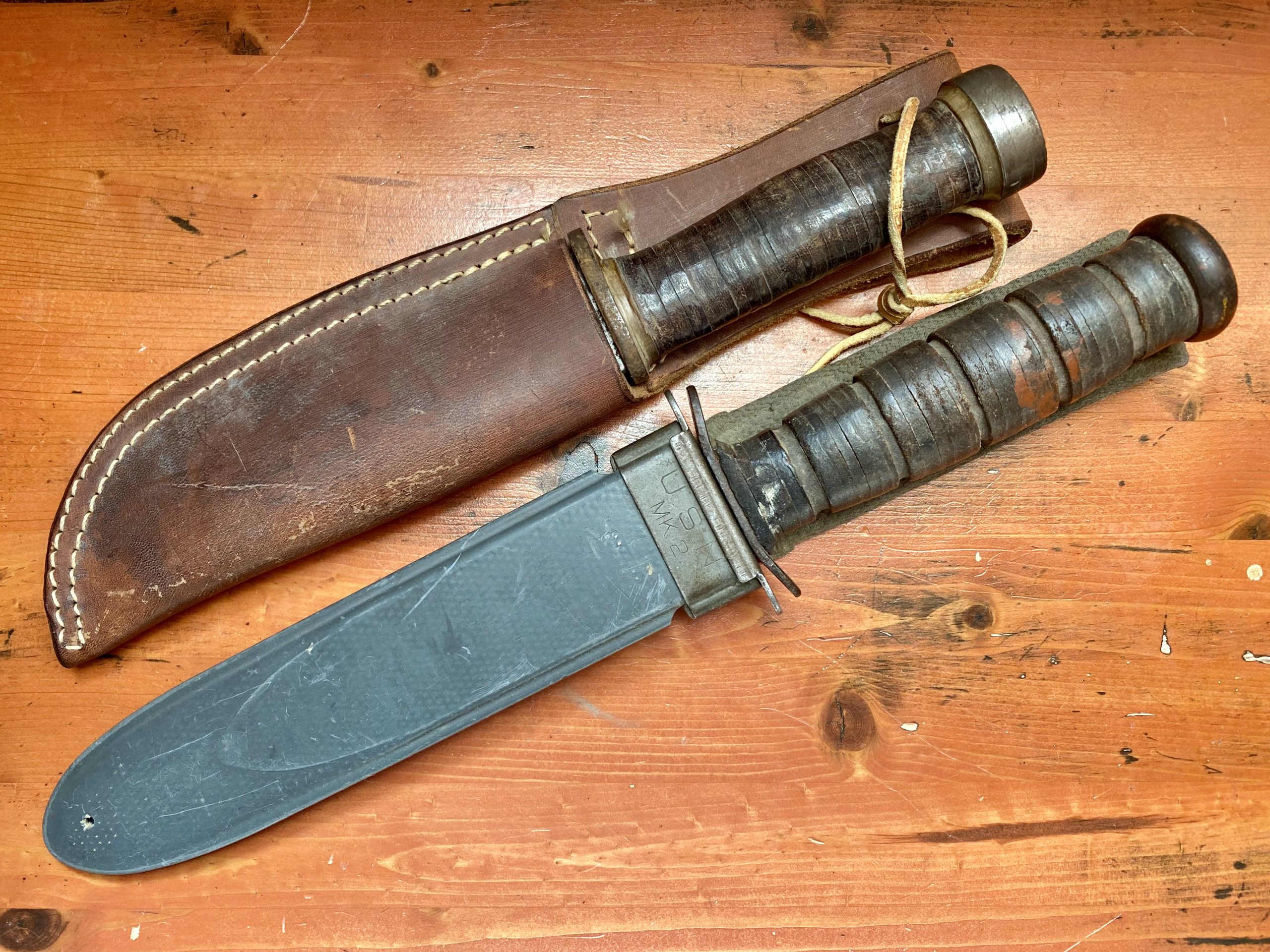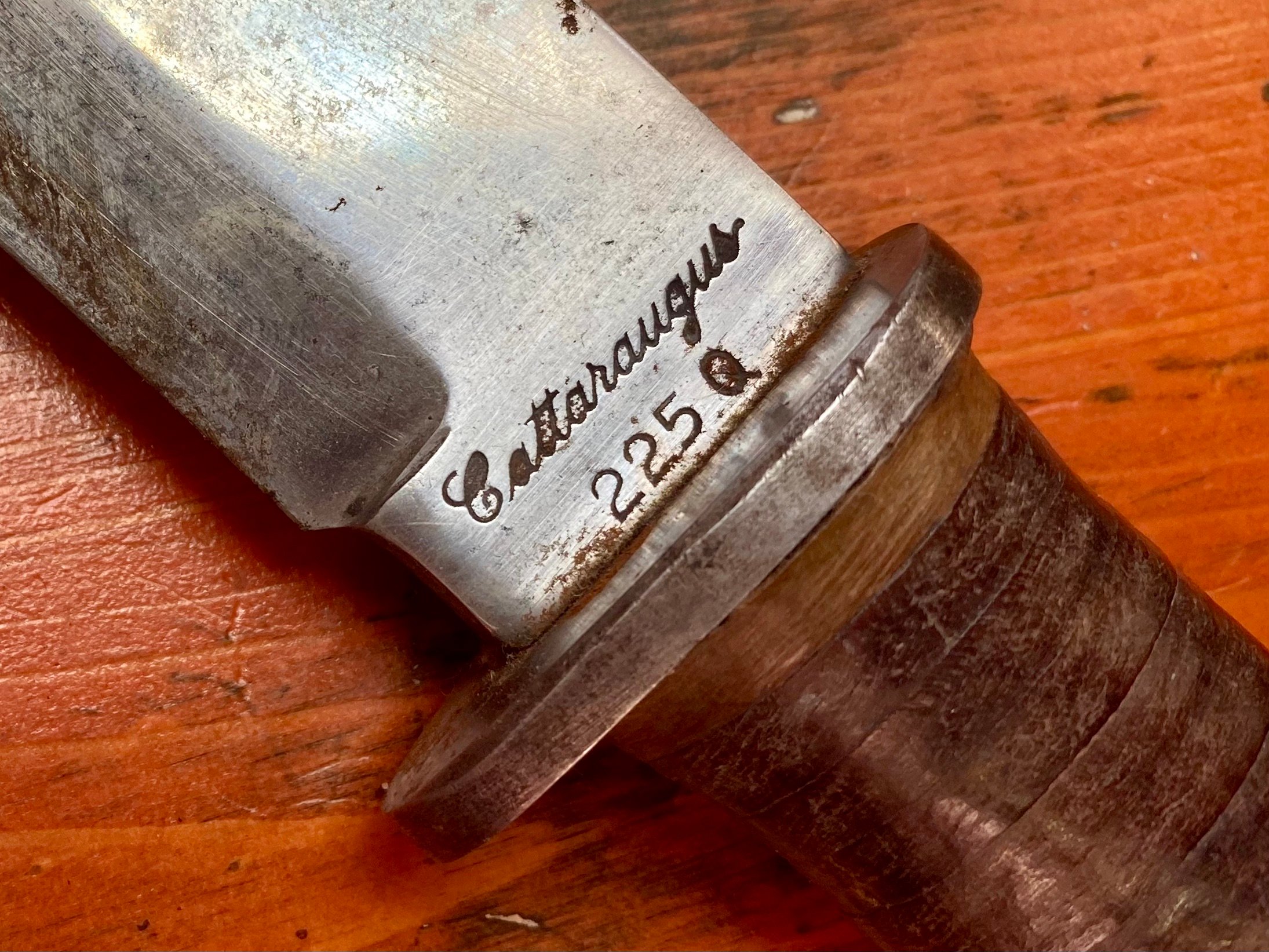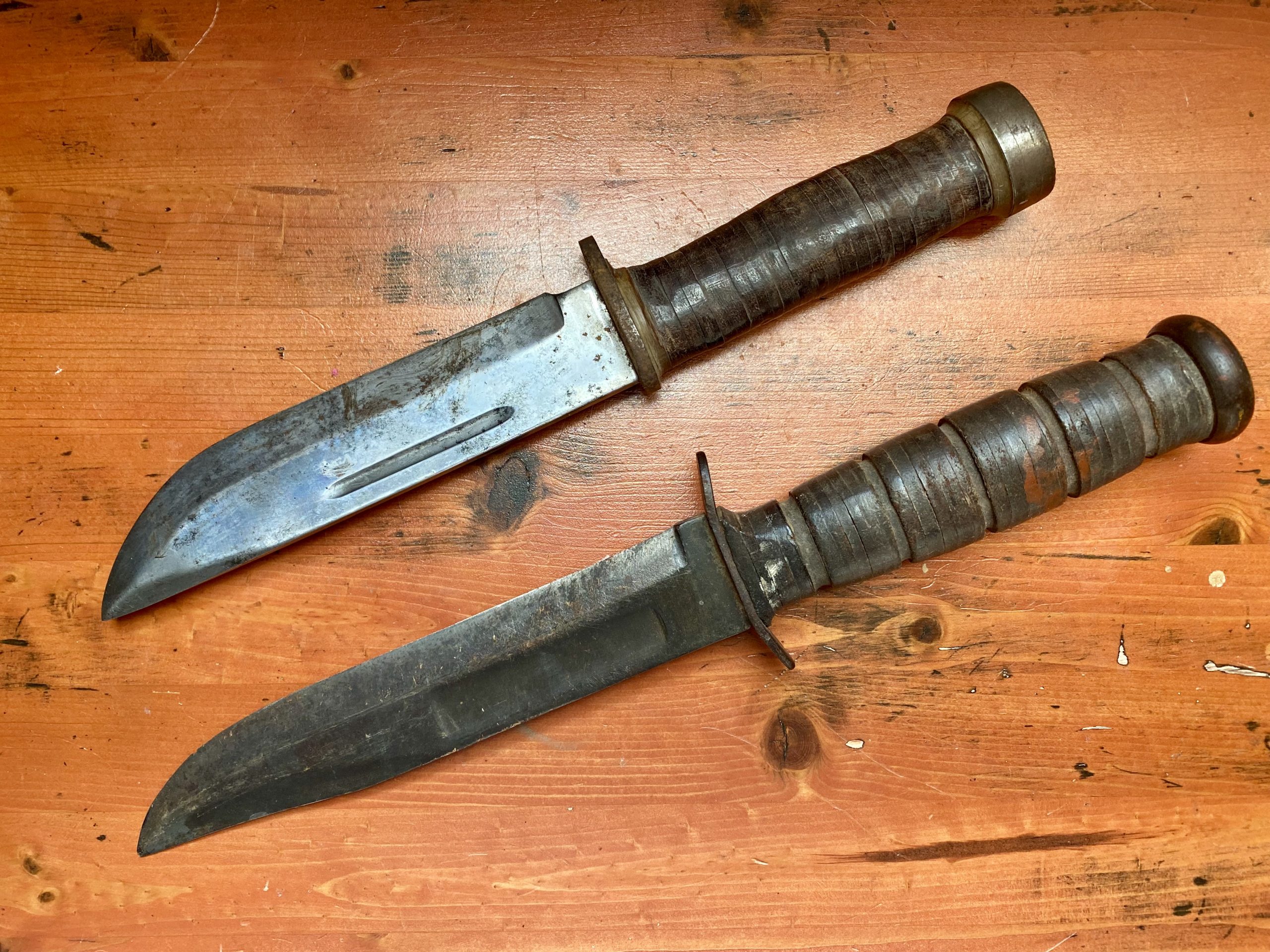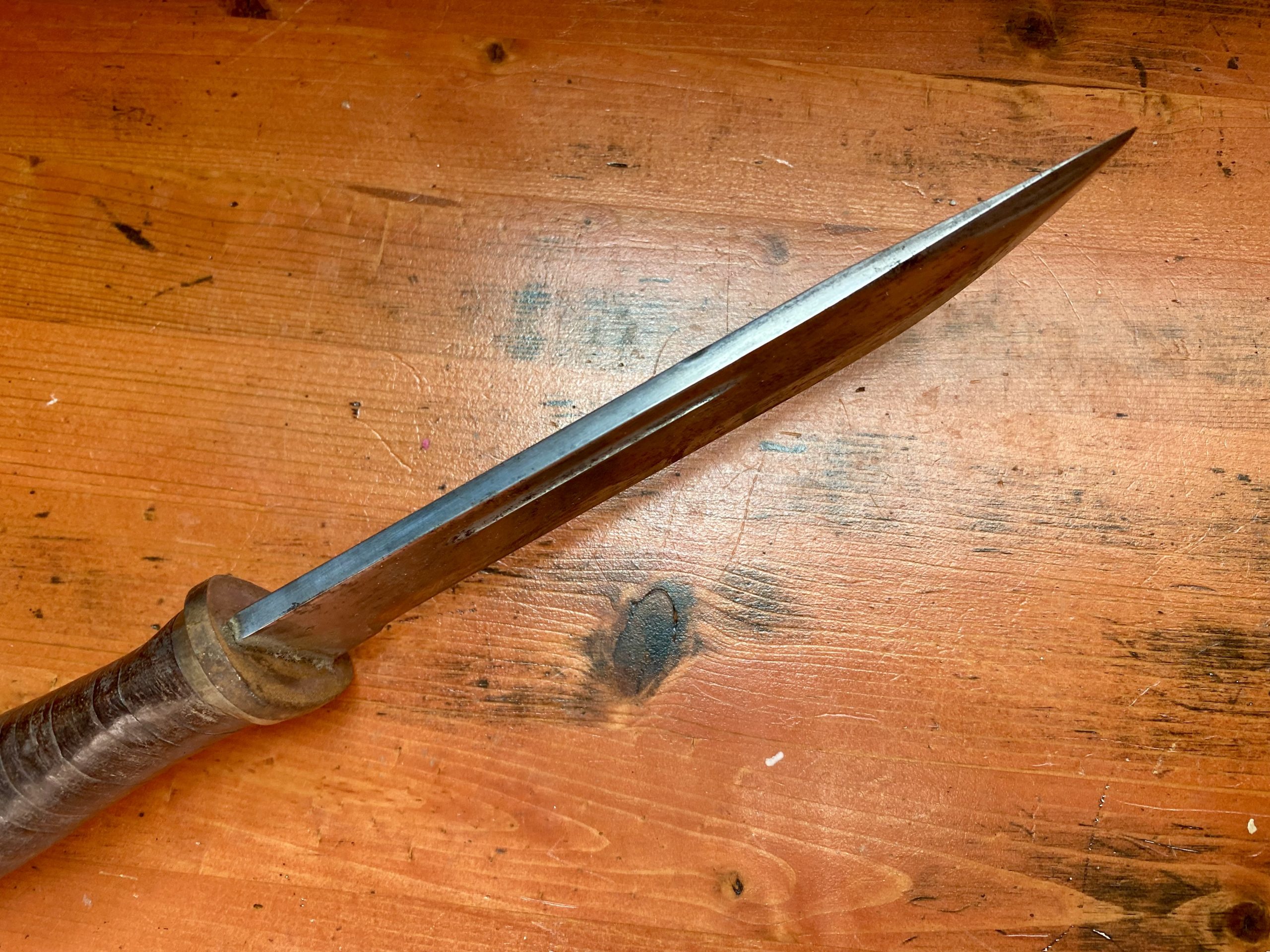I’d bet good money that 99% of the readers of The Mag Life Blog know the WWII era Ka-Bar. The design is legendary and has been in continuous production for longer than most everyone alive. But the Cattaraugus 225Q is another story. And it is a knife that makes the old MK-2 Ka-Bar look a bit frail by comparison.
Cattaraugus

The New York-based company itself is hardly a household name these days, though its origin story shares some names that are. Cattaraugus began in the 1880s and was founded by John Brown Francis Champlin and William R. Case and his brothers (who broke off to form the Case brand we know today a few decades later).
When the War Department began tooling up for battle, they needed knives. The MK-2 remains the iconic representation, but there were others officially issued. And some, if my sleuthing is on point, were often bought and carried even though they weren’t ever officially issued.

The internet pundits can’t agree. Either this was a design Cattaraugus built on spec by request to serve as a knife for the Quartermaster Corps, or it was a design they had been working on as a utilitarian hunting knife. Either way, it found its way into service.
Cattaraugus 225Q
To begin, the blade is thicker than that of the Ka-Bar. It is also shorter. I’ve yet to see an example that was finished in any way. Being reflective wasn’t a concern for most Quartermasters.

The blade is flat most of its width. The grind is flat and fairly steep down to the cutting edge. The shape itself seems to have been inspired by a clip-point, but the clip is very shallow.
This leaves the point at a fairly wide angle, too, meaning it isn’t a knife with a sharp, well-defined point. But the blade has some serious heft to it.

As for the finishing touches, the Cattaraugus 225Q is a bit crude. There is a ground groove on both sides that is not large enough to reduce meaningful weight. I’d say it was for looks if it had a more pleasing look.
The steel itself was polished out nicely—much too nice, really, for a knife that was destined for war. And the blade has a small false grind at the tip.
The Grip

Cattaraugus did little to provide a gripping surface. The tang of the blade is solid and wide beneath the leather washers, but there are no cuts or grooves in the washers to add to the grip. The result is a stacked leather grip that is very smooth.

While this feels good in the hand, it isn’t great for grip texture. Some Cattaraugus owners would rough up the handle. They’d cut, grind, drill, and mill out a groove that went from the pommel to the hilt. This is a common feature you’ll find on these, and it makes some of them look like they’ve been vandalized, but it was done for a good cause.

The cross guard and pommel on these are steel, too. While this was typical of the early war designs, it would be harder to keep producing as material shortages hit manufacturers in the middle years of the war. Lots of knives were made with alternative materials for pommels—like early plastics or wood.
The Pommel

Here’s where things get interesting. Cattaraugus built a really ingenious design that holds tension on the leather very well. And it begins with three washers that form the pommel.

The tang has a couple of cutouts in it that index with the washers. The first washer goes on oriented with the tang. The second is designed to fall on top of the first, but then twist to slightly compress the first. The third looks just like the first one and has a couple of nail holes that allow twisty nails to be driven through all three, and even into the leather below.

The result is a stacked-leather grip that is held reasonably tightly by a chunk of steel. Use it as a hammer—you can’t hurt it. This design inspired some of the heavy pommel designs of knives that would follow for military issue.
This Cattaraugus
I picked this one up at a recent gun show in Oklahoma. It didn’t break the bank. I think I may have given $60 for it. And that’s a decent reflection on its value.
Keep in mind, though, that this is a knife that will outlive us all. The only issue I’ve found with the build is the sheath. I’m not a fan of this sheath—the original sheath, not the replacement pictured above.
The original sheath was two pieces of leather stitched and riveted. The blade had a tendency of cutting them up. Some soldiers even improvised brass sleeves to go over the opening of the sheath so they wouldn’t cut them when putting the knife back in.

The steel has a sufficient carbon content to hold a good edge. The wide blade is great for hunting and bushcraft. Even though it isn’t a full tang design, the blade is strong enough to take a serious beating.
Was it made for fighting?
There’s an argument to be made here. Some of my research brings up names like “Commando,” though I think that’s a pretty big stretch. It is safe to say these knives, like almost all knives of this era, were multi-purpose.

The 6.5″ blade almost meets the old 7″ fighting length (7 inches being the length needed to reach vital organs on most males from any entrance point on the torso). But I keep coming back to the sheath.
The old Cattaraugus knife was built with left-handed sheaths. Most Quartermasters, you see, are left-handed. Actually, the accepted wisdom is that the sidearm would be worn on the right, so the knife needed to go on the left. And yet… As much as I like that definition, the sheath isn’t big enough to wear on those old web belts.
The Cattaraugus legacy?
The company went under in the 1960s. These knives, though, were made in huge numbers. Case even made a very similar version, the 337-6-Q. More than a million of them are rumored to have made it into the hands of American soldiers in Europe and the Pacific during the war.

And Bark River Knives, an old-school knife maker in Michigan that is cranking out some seriously handsome knives (mostly safe queens now, thanks to the appetites of knife collectors), made a nice homage to the old Cattaraugus 225Q. That is the only reproduction I know of.
But if you want a quirky piece of history you can use, won’t destroy, and can afford to replace even if you do destroy it—pick up a 225Q.


